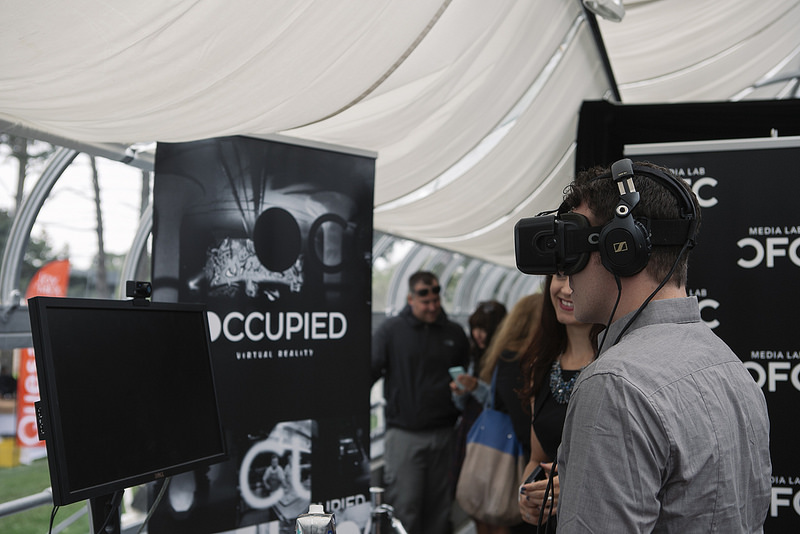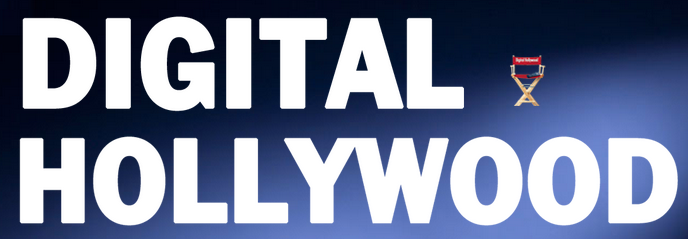The amazing worldwide upsurge of start-up accelerators and incubators was reflected at last week’s Digital Hollywood conference, which featured three packed sessions exploring the topic.
I moderated a “Think Tank” on incubating digital content that featured Ana Serrano, Founder of ideaBOOST (which I advise), Richard Wolpert, cofounder of Amplify.LA and Chris Gartin, cofounder of io/LA
 It used to be simple, there were accelerators and there were incubators. (Here's the difference).
It used to be simple, there were accelerators and there were incubators. (Here's the difference).
But, check out some of the other programs represented at the DH conference and you'll see a wide range of models that are emerging to meet a lot of different needs than the venture backed early stage seed accelerators, as exemplified by Y-Combinator and TechStars. (DH speakers came from Originate, Cross Campus, Tipping Point Partners, Turner's Media Camp, Portland Innovation Experiment (PIE), Mucker Labs, and Idealab New Venture Group.
Along with crowdfunding, the accelerator phenomenon is the most-buzzed-about innovation in the start-up world, inspired by the success of the investor-backed Y-Combinator and TechStars that apply a combination of mentoring, seed investment, and exposure to help launch tech startups.
The contours of this ‘seed capital’ model have been widely analyzed, chewed over, contemplated, and copied.
What Accelerators Do Right
If an entrepreneur is willing to give the accelerator equity in their company and devote a few months of intensive work, a host of benefits will come their way, as a recent survey of accelerator graduates suggests.
Accelerators are good at:
1. Generating and validating an idea and a business model.
2. Investing and finding more investors.
3. Providing contacts and opening doors.
4. Providing mentors, advisors and guidance.
5. Providing hands-on help or education.
6. Helping in product development and testing.
7. Helping with product marketing and user acquisition.
8. Providing a peer group in a high-pressure environment.
9. Providing a physical location and support resources.
10. Negotiating and providing discounts, freebies and perks.
Which Accelerators Will Fail?
The proof, of course, is in the pudding, e.g., whether start-ups are able to attract additional capital, customers, and revenues, and, over time, produce an exit (sale or stock offering) that provides returns to the initial investors. It’s probably too soon to tally the success of most of these young companies, but industry veteran Peter Relan recently predicted in a controversial post that 90% of accelerators will ultimately fail on financial terms, because they will be unable to produce profits equal to investments.
Nonetheless, Relan believes the accelerator model creates genuine value for the industry and the country beyond simple ROI, because they constitute “a new education system, one where relevant real-world experience has begun to trump degrees. The right program can provide the same connections that accompanied acceptance into the right university 15 years ago.”
Beyond VC Expectations
Not all accelerators and incubators are financed by venture investors. There various models – let’s call them start-up factories --- sponsored by cities, universities, economic development authorities, even clusters of angel investors in a region. They often have non-market objectives, for instance, creating jobs in a region or improving the performance of a given industry.
A recent example is the “Made in New York” Media Center, an incubator to be launched soon in Brooklyn by the Independent Feature Project in conjunction with General Assembly and the City of New York.
Other accelerators are sponsored by a company, for example ad agency Weiden + Kennedy’s sponsorship of the Portland Incubation Experiment (PIE); Turner Broadcasting’s launch of Media Camp); and the Canadian Film Centre’s launch of ideaBOOST – each has its own reason for making the investment.
Turner is looking for tech companies that address business needs within the broadcasting industry, and which can help Turner thrive. Companies incubated within PIE may also have a media focus, but in addition, are intended to support the Portland tech ecosystem. IdeaBOOST seeks to help the Canadian content business, as well as to encourage its practitioners to build sustainable companies using principles derived from the lean start-up movement.
These and other accelerator models will blend program features to meet their own goals beyond the straight-up ROI expectations of venture investors (fast growth, 10-100x return).
VCs Don’t Like Content Companies
The classic seed-accelerator concentrates on technology start-ups, which, if successful, can scale rapidly and deliver a Google-level return on investment. Like a mutual fund, the accelerator spreads investors’ risk across a bundle of investments, and then injects the companies with capital, learning, and networking.
Like certain VCs, there are industry-specific accelerators, for example in health care, biotech, nanotechnology, automotive, and others.
But, until recently, not content. In posts here and here, I suggested that maybe the chasm between content and tech is blurring.
VC’s historically do not much like content companies, as a recent TechCrunch post articulated, despite the fact that people spend a third of their time online consuming content.
Content companies are tough to “scale” quickly, meaning grow the number of customers, and therefore revenue potential. Certainly not like tech platform superstars like Pinterest, which added 11 million monthly uniques in 9 months.
Furthermore, content companies rarely have huge exits like an acquisition – meaning smaller paydays for investors, and a sale often takes longer than tech businesses.
Finally, the traditional tech investors consider content companies to be lifestyle businesses, and simply are not capable of reaching “$100mm and then $1 billion in revenues – anything less is insufficient.”
 Enter IdeaBoost
Enter IdeaBoost
“I’m reluctant to even use the word ‘accelerator,’” said IdeaBOOST’s Serrano at the Digital Hollywood panel, in part because its model veers from the ‘classic’ accelerator model in several ways: It is financed with funds from the government and two large private companies, not VCs looking for a big payday from participants; IdeaBOOST does not take an equity stake in its companies; and most importantly, its first group of eight companies are all building content.
IdeaBOOST, which official kick-offs its first four-month cohort on November 5th in Toronto, is a hybrid model that borrows from many sources in order to support aspiring content companies.
Kickstarter and IndieGoGo inspired IdeaBOOST to include the public in the development process. But instead of soliciting funds, applicants ask the online public to “boost” their project, and in the process acquire a database of prospective customer email addresses before even being selected. IdeaBOOST applicants drummed up more than 300,000 votes in just a month.
This focus upon audience engagement is a key differentiator for ideaBOOST, borrowed from the lean startup movement’s focus upon customer development. The 8 companies accepted in ideaBOOST will be required to use customer validation processes as they develop their product, business plan, and audience engagement scenarios. Mentors for IdeaBOOST companies include content, business, and tech experts from Canada and the U.S.
Co-working space
Founders of Amplify.LA and io/LA have both tech and entertainment cred, and have recruited talent from across both industries. "Pure" content start-ups are in the minority, says Amplify's Wolpert, but if the company can grow, they consider it. io/LA does feature more involvement by talent, so their hybrid model, just launched this year, will be intriguing to track.
The two programs have also grafted the seed-accelerator model onto another important trend, the co-working movement. Both groups have facilities which house the companies receiving their investments. In addition, other start-ups and creatives are free to work out of the space, with tiered fees based upon what the companies use. Both have active educational programs featuring thought leaders, experienced entrepreneurs and mentors from their accelerator. Both programs foster synergy between and among the membership, with the result that participants can quickly build teams, stronger companies and better products.
If you’re looking for a great work environment for your start-up in either Santa Monica or Hollywood, check them out. And chances are, there is a similar opportunity in your community. Just check out these examples from around the world.
 Wednesday, September 23, 2015 at 2:44 PM by
Wednesday, September 23, 2015 at 2:44 PM by  Nick DeMartino
Nick DeMartino  Last spring Victor Harwood produced a stellar group of sessions on virtual reality and related innovations at this long-running conference. Sessions were so well attended and interesting that expanded the number and breadth of topics across three days of the conference. Take a look at all the sessions here.
Last spring Victor Harwood produced a stellar group of sessions on virtual reality and related innovations at this long-running conference. Sessions were so well attended and interesting that expanded the number and breadth of topics across three days of the conference. Take a look at all the sessions here.



